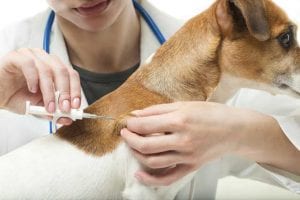Dog identification is vital in ensuring the safety of the UK’s pets as well as helping to clamp down on any illegal practices involving dogs.
As of 6th April 2016, UK dog identification law made considerable nationwide changes to improve the chances of finding lost pets and holding people to account for the mistreatment of them.
Whether you are a dog owner yourself or want to understand how you can help if you find a lost dog, here is all the relevant new information on dog ID.
Related Articles –
- Maltese Shih Tzu – Surprising Things About Malshi
- Bernedoodle Dog Facts and Information
- Teacup Maltipoo – 10 Things You Should Know
Previous Law
Back in 1992, the UK government established the Control of Dogs Order which stated that in any public place, a dog must at all times wear a collar with the name and address of the owner clearly marked on it.
The dogs name is optional information, however because of the very real threat of dog theft, a name isn’t necessarily a good choice as it would help a thief appear as the dog’s actual owner when it responds to the name being called.
The standard information required is:
- Owners Name
- Owners Address (Including Postcode)
- Owners Phone Number (Optional but we recommend)
Micro-Chipping
As of 6th April 2016 it became compulsory for dog owners to have their pet micro-chipped and their details to be kept up to date.
The thought behind this is that it gives lost dogs a much better chance of being returned to their owners, and at a fraction of the time.
Whether it has lost its collar or not, a dog can be quickly scanned and its information found on a national database, their owner can then be contacted by the information provided in the database.
How it Works
 The microchip is about the size of a grain of rice, which holds a unique number that is scanned and relates to the owner’s details.
The microchip is about the size of a grain of rice, which holds a unique number that is scanned and relates to the owner’s details.
It is implanted into the dog by a specially designed sterile needle. Specifically, it is implanted just under the dog’s skin between the shoulder blades. For those concerned about the procedure, there is little to worry about as it is no different to a vaccination.
The only thing left is for the owner to write down all their current contact information to be recorded into the database and cross-referenced with the dog’s identification number.
It is also important for dog owners to remember to change their contact information when moving house or changing phone number as you can face a penalty if it is found to be out of date.
There are hundreds of places to get your dog fitted with a microchip, however, the cost does vary. Your best bet is to check out the Dogs Trust website, where they are offering it for free all around the UK.
ID Tags
It would be easy to think that because your dog has a microchip, it doesn’t need an ID tag, this is incorrect. Speaking to ID tag retailer Doggie Tags, they explained that “without an ID tag, you are actually slowing down the process.
“If a dog is lost and then found without a tag, the person must find the nearest place to have it scanned before acquiring the owner’s information. Fitting a tag saves all this hassle, which is only there in the case that a dog is without one.”
Penalties
There are penalties in place for those who don’t abide by the new rulings. Dogs 8 weeks and older must now be micro-chipped. If it hasn’t been micro-chipped or your database details aren’t up to date, you will be given a 21-day notice to correct it.
Failure to comply with this means you face a fine of up to £500. Alternatively, a warden may seize your dog from you, have it registered and then get you to cover the cost.
Why it’s Important
While it seems like a major move to microchip every dog in the UK, in the long run, it will both save a considerable amount of money as well as assure fewer dogs each year go missing and are never found.
Each year over 100,000 stray dogs are picked up by kennels and charities which put a huge strain on their resources. Cutting this figure could save them up to £33 million every year.
For individuals, these facts might not matter too much, but it could be vital in returning your dog if you are unlucky enough to lose it.
Related Articles –
- Aussiedoodle – 12 Things You Need to Know About
- Sheepadoodle – Everything You Should Know About
- Pomeranian Husky Mix – 12 Facts You Should Know About Pomsky





